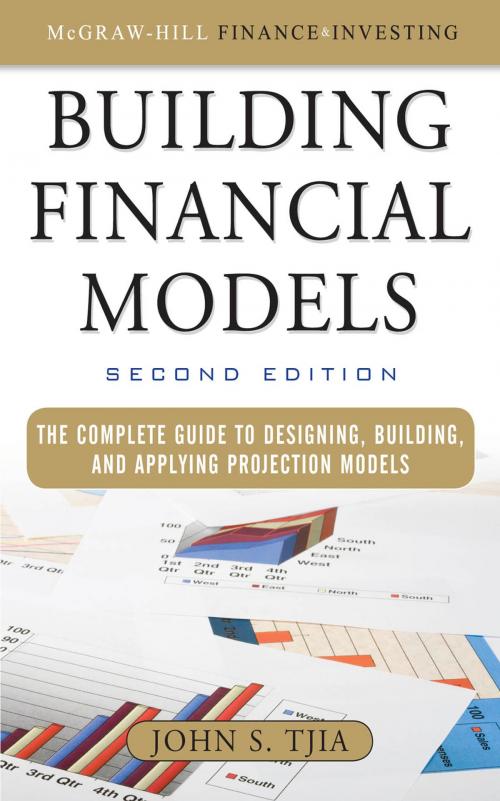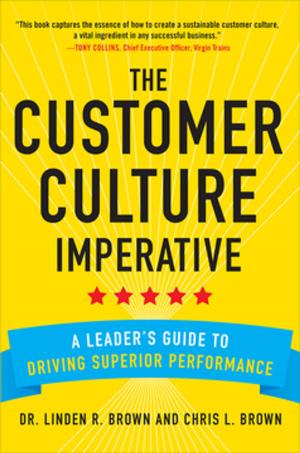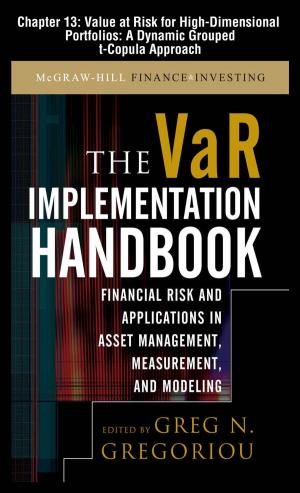Building Financial Models
Business & Finance, Personal Finance, Investing, Finance & Investing, Nonfiction, Health & Well Being, Self Help| Author: | John S. Tjia | ISBN: | 9780071608909 |
| Publisher: | McGraw-Hill Education | Publication: | April 12, 2009 |
| Imprint: | McGraw-Hill Education | Language: | English |
| Author: | John S. Tjia |
| ISBN: | 9780071608909 |
| Publisher: | McGraw-Hill Education |
| Publication: | April 12, 2009 |
| Imprint: | McGraw-Hill Education |
| Language: | English |
The ability to effectively create and interpret financial models is one of the most valued skills in corporate finance--from Wall Street to Main Street. Now, the acclaimed guide to designing, building, and implementing valuation projection models is fully revised and expanded to keep finance and accounting professionals competitive in today's marketplace.
This second edition of Building Financial Models continues the tradition of its predecessor by providing a hands-on approach to creating a core model that is supported by broad coverage of cornerstone accounting and finance principles. Additionally, this updated volume features:
- Entirely new coverage of discounted cash flow (DCF) modeling
- Excel formulas for making powerful calculations within the spreadsheet
- In-depth explanations of both the principles and mechanics of projection models
Building Financial Models helps readers practice good thinking and apply sound knowledge of their tools--two key attributes to producing robust and easy-to-use models. This practical guide takes you step by step through the entire process of developing a projection model, with a full chapter dedicated to each phase. By the end, you will have a working, dynamic spreadsheet financial model for making projections for industrial and manufacturing companies.
Furthermore, this Second Edition provides the vocabulary and syntax of model building so you can tailor core models to fit any size company and allow for quick input changes to test sensitivity. The companion website www.buildingfinancialmodel.com offering example spreadsheets will give you a head start on developing your own models.
A flexible and successful financial projection model does more than just add numbers--it explains the complex relationships between those numbers and illuminates ways to use those associations to add value to an enterprise. Building Financial Models is the only book you need to create and implement a fluid financial projection model that is both state of the art and user friendly.
The ability to effectively create and interpret financial models is one of the most valued skills in corporate finance--from Wall Street to Main Street. Now, the acclaimed guide to designing, building, and implementing valuation projection models is fully revised and expanded to keep finance and accounting professionals competitive in today's marketplace.
This second edition of Building Financial Models continues the tradition of its predecessor by providing a hands-on approach to creating a core model that is supported by broad coverage of cornerstone accounting and finance principles. Additionally, this updated volume features:
- Entirely new coverage of discounted cash flow (DCF) modeling
- Excel formulas for making powerful calculations within the spreadsheet
- In-depth explanations of both the principles and mechanics of projection models
Building Financial Models helps readers practice good thinking and apply sound knowledge of their tools--two key attributes to producing robust and easy-to-use models. This practical guide takes you step by step through the entire process of developing a projection model, with a full chapter dedicated to each phase. By the end, you will have a working, dynamic spreadsheet financial model for making projections for industrial and manufacturing companies.
Furthermore, this Second Edition provides the vocabulary and syntax of model building so you can tailor core models to fit any size company and allow for quick input changes to test sensitivity. The companion website www.buildingfinancialmodel.com offering example spreadsheets will give you a head start on developing your own models.
A flexible and successful financial projection model does more than just add numbers--it explains the complex relationships between those numbers and illuminates ways to use those associations to add value to an enterprise. Building Financial Models is the only book you need to create and implement a fluid financial projection model that is both state of the art and user friendly.















